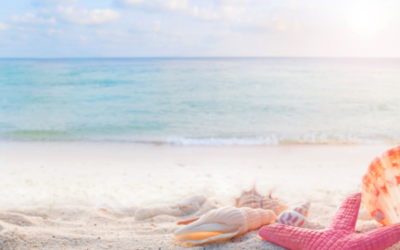DNA Fingerprinting: A key to know your ancestry

A new field of study was opened in 1984 when Professor Sir Alec Jeffreys generated the first genetic fingerprint in his lab at the University of Leicester. Talking about his discovery, Sir Alec said, “My life changed on Monday morning at 9.05 am, 10 September 1984. What emerged was the world’s first genetic fingerprint. In science it is unusual to have such a ‘eureka’ moment. We were getting extraordinarily variable patterns of DNA, including from our technician and her mother and father, as well as from non-human samples. My first reaction to the results was ‘this is too complicated’, and then the penny dropped and I realised we had genetic fingerprinting.”
Dr. Anil Kumar Tomar
Scientist-D
Department of Biophysics, AIIMS, New Delhi
Genetic fingerprinting, or commonly referred as DNA fingerprinting, is a revolutionary method that has transformed the study of forensic science. It is a method that employs analysis and comparison of DNA to solve legal issues like paternity testing and inheritance disputes, establish identity in criminal cases when biological evidence is discovered at crime scenes, and identify victims of major catastrophes, and mutilated and unidentified bodies. In addition, it is also routinely applied in immigration issues, and wildlife forensics. The principle behind DNA fingerprinting is the idea that some portions of each person’s genome have a unique genetic code. To discover a person’s unique genetic profile, this technique entails analysing and comparing specific segments of their DNA. Within the DNA molecule, this code is made up of nucleotide sequences that are organised in a definite order. Short tandem repeats (STRs), for example, are highly variable DNA sections that can be used to create a unique pattern or “fingerprint” for each person. There are various steps involved in the DNA fingerprinting process. A biological sample is first used to extract DNA; this sample could be blood, saliva, hair, or any other bodily fluid. DNA is cut into specified fragments using restriction enzymes and the polymerase chain reaction (PCR) is used to amplify DNA segments, which are then separated by a gel electrophoresis technique and bands of DNA fragments are visualised by X-ray. The DNA profile of the person is represented by the resulting band pattern.
Soon after its discovery, the first paternity case, an immigration case, and the identification of identical twins were all solved in 1985 using DNA fingerprinting. While, the first criminal investigation to use DNA fingerprinting evidence occurred in 1986. Few years later, a leading British chemical company, Imperial Chemical Industries (ICI) marketed the first commercially available kit. As a very accurate and reliable technology for identifying suspects, establishing ties between crime scene evidence and criminals, DNA fingerprinting has had a significant impact on forensic investigations. Further, identifying disaster or mass casualty victims, settling paternity and kinship issues, and studying genetic diseases and population genetics have all benefited greatly from its use. However, the ability to trace and identify ancestral lineages using DNA fingerprinting has become more important. Scientists can discover the genetic markers that have been passed down through the generations by examining particular sections of an individual’s DNA, revealing information about one’s ancestry.
The widespread use of DNA fingerprinting by anthropologists, social scientists, and genealogists to support conventional / historical research and create connections with biological parents is a result of technology advancements and low costs. The capabilities and applications of DNA fingerprinting have been substantially enhanced by the development of DNA sequencing technologies. The simultaneous examination of several genetic markers using next-generation sequencing (NGS) technology boosts the efficiency and discriminatory power of the process. Ancestry DNA tests help people to discover more about their family roots. People frequently utilise DNA ancestry tests to learn about their ethnicity and family history. DNA ancestry tests available to the public are Y chromosome test, mitochondrial DNA test, autosomal DNA test, single nucleotide polymorphisms (SNPs), etc.
A Y chromosome test is employed to ascertain whether tested males have the same paternal ancestry. The Y chromosome is passed down from father to son and has extremely low mutation over many generations. All males in a direct male line will have the same Y chromosome profiles, if such a line can be identified. This test is the best way to determine whether alleged males are genuinely connected biologically. On the other hand, mitochondrial DNA testing is used to determine maternal lineage. While mitochondrial DNA is inherited by all children, only biological females have the ability to pass it on to future generations. Thus, this test is applicable to both biological males and females to know about their maternal ancestry. Autosomal DNA tests are not specific in that way and are applied to confirm parent/child relationships and all other relationships up to the second cousins. Autosomal DNA is inherited from the autosomal chromosomes. Humans have 22 pairs of autosomal and one pair of sex chromosomes (X and Y). SNPs are the most prevalent form of genetic variations in people. Each SNP is a variation in a single nucleotide, the basic unit of DNA. SNPs are common genetic variations that can be used to infer a person’s ethnicity or ancestry. SNP testing may be superior to Y chromosome or mitochondrial DNA testing, which only consider one ancestral line. Their ability to identify degraded DNA strands is an advantage.
Looking at present scenario, this technique has evolved exponentially in terms of technological innovations and commercialization. It is now commercially available for consumers at a reasonable price. If you want to learn about your ancestry, you can simply select and order from a range of DNA fingerprinting tests as per your requirements. The major global firms that provide these test facilities are Family Tree DNA, Easy DNA, Ancestry.com DNA, and 23andMe. Several companies in India are also offering these services, including DNA Forensics Laboratory, DDC Laboratories India, map my genome, Xcode Life, and DNA Labs India.
Related
From Bean to Bliss: How to Find Your Ideal Coffee Match
Coffee, the world's most popular beverage, is enjoyed for its rich flavour and invigorating energy boost. But beyond the satisfying cup lies a...
Beat the Heat: Consumer Safety During Summer Heatwaves
Heatwaves are a common feature during the summer months in India, with temperatures in the range of 45-47°C (113-117°F). Northwestern India is...
Unmasking Air Pollution’s Impact on Pulmonary Health
Over the past few decades, air pollution and climate change have become major global concerns. Air pollution has many detrimental effects that pose...



